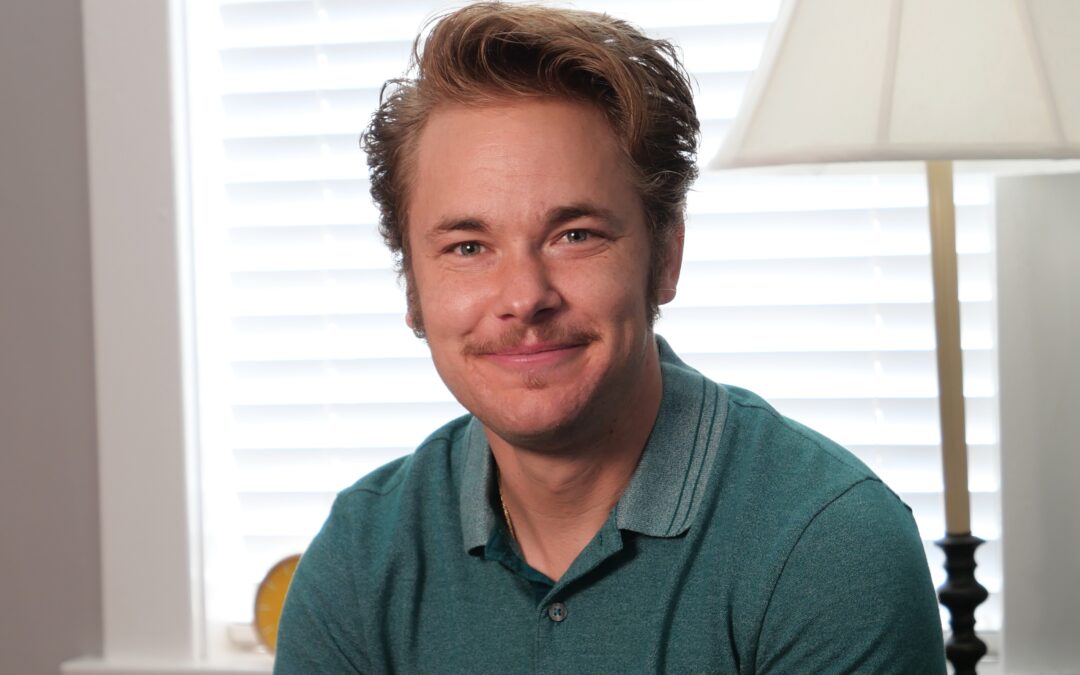Beck Gardner (he/him) is a Postgraduate Fellow at Lakeview Center for Psychotherapy. He holds a Master’s Degree in Counseling and Psychotherapy from the Institute of Clinical Social Work. Prior to joining Lakeview, he worked as a school counselor at the Ancona school (a Montessori school for students Pre-K to 8th grade) and as a therapist at a group practice that focused on offering services to queer and gender-diverse clients. Beck works from a psychodynamic perspective, working with his clients to develop a fuller understanding of themselves, their current and past experiences, and the ways in which they all link. Beck specializes in treating depression, anxiety, relationship difficulties, trauma, and challenges with self-esteem and identity. Beck has experience with and enjoys working with queer and gender-diverse clients of all ages, adults, children, and adolescents.
What led you to pursue therapy as a career?
Early in my life, I had aspired to be a professional artist, choosing to pursue an undergraduate degree in art. After years of struggling to actualize this dream in a way that was financially feasible, I met a friend who was in the early stages of their career as a therapist. They saw the ways in which my personality and talents would translate well to working as a therapist and encouraged me to consider pursuing this as a career. At first, I was skeptical of my ability to make what felt like such an abrupt shift in my career path, but conversations with my friend about psychodynamic theory and practice intrigued me and felt aligned with how I saw myself. I tried out various entry-level social work positions and realized how stimulating and rewarding the work was. I decided to pursue a Master’s in Counseling and Psychotherapy at the Institute for Clinical Social Work, still not fully understanding, but quickly learning, what an advantage my art background would be in this field.
How does your art background influence your therapeutic work?
When I first started my education and training to become a therapist, I was surprised to find that many aspects of artmaking that I appreciate and get excited about were found in psychodynamic work and thinking. As I proceed to develop my career and therapeutic style, I’m continually noticing new ways the two processes overlap and enhance each other. I see how my work as an artist and as a therapist heavily involve elements of play; in both artmaking and an ideal session both my patient and I are using flexibility, spontaneity, risk-taking, metaphor, creativity, and humor. I’ve noticed that my ability as an artist to see and effectively communicate hidden and unspoken elements of life also lends itself well to helping my patients identify and communicate these things within themselves.
Is there a particular type of patient you most enjoy working with?
Prior to beginning my education and training, I had a fantasy of working with mostly queer and gender-diverse patients. As a queer trans man, I have had many experiences in my own personal therapies where I had felt particularly seen by a queer therapist, and wanted to do the same for others in the queer community. After learning more about myself, psychodynamic therapy, and having experiences as a therapist with both queer and non-queer patients, I now understand this fantasy in a different way. It still feels particularly important to me to work with queer and gender-diverse patients, but I find enjoyment in working with a more expanded and diverse set of patients now.Right now, I’m excited about learning more about Self Psychology as it applies to working with queer patients. I had a professor that taught that Self Psychology lends itself well to understanding and treating queer and gender diverse patients, due to the emphasis on the patient’s healthy developmental needs. I’m finding this to be true in my work, and I’m eager to learn more in this area.
Click Here For More Info on Psychodynamic Therapy at Lakeview Center.
